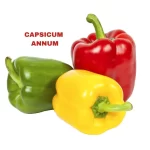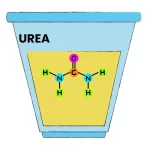Vaccininum is a nosode derived from vaccine matter. It is associated with a chronic condition known as Vaccinosis, characterized by symptoms resembling those of Hahnemann’s Sycosis.
This condition arises from the effects of vaccine poisoning and can lead to various chronic ailments, including neuralgias, persistent skin eruptions, chilliness, and indigestion with significant flatulent distension.

Scientific Name: Vaccininum
Vaccininum is prepared from vaccine matter, typically obtained from sources used in vaccination procedures.
Its origin lies in the study of vaccine-induced symptoms and the subsequent development of a nosode to address the chronic effects of vaccine poisoning.
DRUG PATHOGENESIS
- Vaccine poison can induce a chronic state known as Vaccinosis, characterized by symptoms similar to Hahnemann’s Sycosis.
- This condition manifests as neuralgias, persistent skin eruptions, chilliness, and indigestion with significant flatulent distension.
- The symptoms arise from the body’s response to the introduction of vaccine matter.
KEY CHARACTERISTICS
- Affected individuals may exhibit irritability, impatience, ill humor, and nervousness.
- Head symptoms include frontal headaches and a sensation of splitting in the forehead and eyes.
- Skin manifestations often involve hot and dry skin, along with pimples, blotches, and eruptions resembling variola (smallpox).
RELATIONSHIP WITH OTHER DRUGS
- Vaccininum is compared to other anti-vaccinal remedies, as well as specific nosodes like Variolin and Malandrinum.
- Thuja is also noted as a powerful adjuvant in the treatment of malignant diseases.
DOSE
- Vaccininum is typically administered in potencies ranging from the sixth to the 200th potency.
Frequently Asked Questions
What is Vaccininum derived from?
- Vaccininum is a nosode derived from vaccine matter.
What is Vaccinosis?
- Vaccinosis is a chronic condition induced by vaccine poisoning, characterized by symptoms similar to Hahnemann’s Sycosis.
What are the key characteristics of Vaccininum?
- Key characteristics include neuralgias, persistent skin eruptions, chilliness, and indigestion with significant flatulent distension.
How is Vaccininum administered?
- Vaccininum is typically administered in potencies ranging from the sixth to the 200th potency.
Meaning of Difficult Words
- Nosode: A homeopathic remedy prepared from diseased tissue or discharge, used to stimulate the body’s immune response.
- Vaccinosis: A chronic condition resulting from the adverse effects of vaccination, characterized by symptoms resembling those of the original disease or other chronic ailments.
- Sycosis: A term used in homeopathy to describe a chronic miasm or constitutional predisposition characterized by various symptoms, including chronic inflammations, growths, and discharges.
- Neuralgias: Severe, intermittent pain along the course of a nerve or group of nerves, often characterized by sharp, stabbing sensations.
- Flatulent: Relating to or affected by excessive gas in the digestive tract, leading to bloating, discomfort, and flatulence (passing gas).
- Variola: The scientific name for smallpox, a highly contagious and often fatal viral infection characterized by fever and a distinctive rash.













Leave a Reply